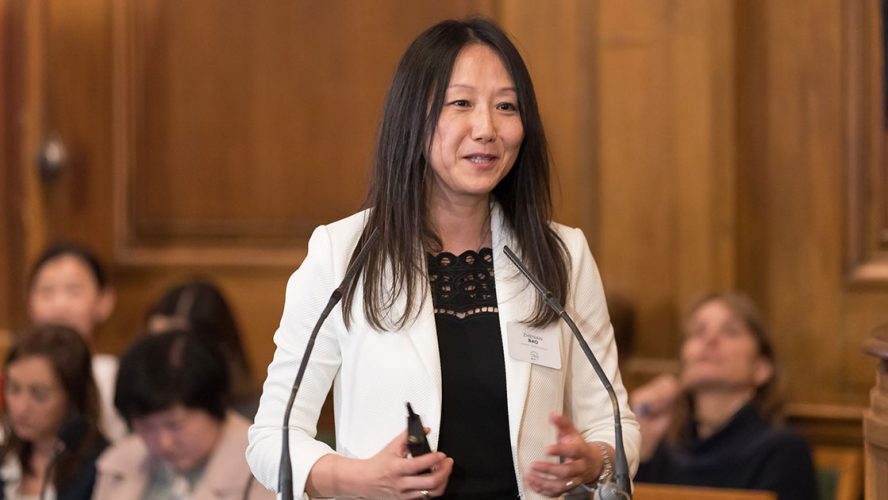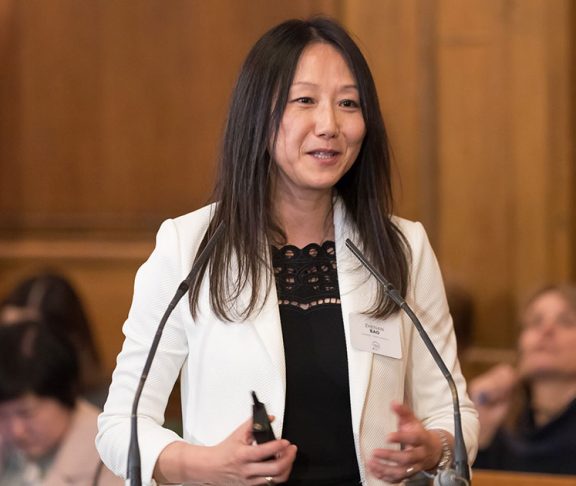Zhenan Bao, chemical engingeering professor at Stanford University, discusses her experience as a woman in STEM, and as one of the most decorated female researchers of our time.
Explain your role at Stanford, and the focal point and findings of the research you are conducting.
I am a professor of chemical engineering, and by courtesy, chemistry and material science and engineering at Stanford University. Prior to joining Stanford in 2004, I was a distinguished member of technical staff in Bell Labs (Lucent Technologies) from 1995 to 2004. My group pioneered a number of design concepts for organic electronic materials, and my work has enabled flexible electronic circuits and displays. In my recent work, we developed skin-inspired organic electronic materials, which resulted in unprecedented performance in medical devices, energy storage and environmental applications.
You are one of the most decorated and influential female researchers of our time, most recently being chosen as one of five women awarded a 2017 L’Oréal-UNESCO For Women in Science award in physical sciences. How has the recognition in the industry helped you amplify your voice in the research world?
The award gave me more exposure, especially to those outside my normal specialized scientific communities. I hope my experience and my path in science and engineering can inspire more girls to choose science and engineering as their future career.
Up until inventing skin-inspired electronic material, can you describe your experience as a minority female in the sciences?
Females have always been the minority in science in school, at work and at conferences. I made myself have a mindset that I do not let any situation prevent me from speaking out or from attending events. I feel it is even more important for more women to be present so that we can encourage more women to be part of it. I also try to include more women as speakers if I organize a conference. In my own lab, I try to assemble a team that is highly diverse in regard to gender, countries the group members are from and their scientific background. I truly believe that in order to advance science, we need to include people of all backgrounds.
What are the biggest concerns regarding the gender gap for women in research?
I think there may be a misconception that a career in research may not give sufficient flexibility for women who want to have both a sucessful career and a family. There may also be the concern that it is harder for women to move up to higher level positions. I think things are improving but the gender gap still exists at all levels. We need to continue to raise awareness and implement policies that will ensure equality in workplace.
What do you see is improving for women in research?
I see at the level of junior faculty, the percentage of women has increased significantly over the past 10 years. I hope this will lead to an improvement of percentage of women at the senior level in the next 10 years. I also see there are more female students in science and engineering.
Stanford is one of the nation’s top research universities. How could other schools draw inspiration from this academic structure to empower their researchers?
I found several things in Stanford very helpful in increasing diversity. There’s a general culture of promoting diversity; the adminstration does not just say it, they truly support ideas and initiatives that helps to promote diversity. We also have great role models in Stanford, and our current provost, dean of engineering, associate dean of engineering and multiple department heads are female. Lastly, female faculty members have formed their own support group and informally mentor each other. Investing in research and our researchers is paramount to our continued global advancement and competitiveness. The United States spends the most money on research at $44 billion dollars, accounting for 44 percent of market research revenue in 2015. However, only 3 percent of scientific Nobel Prize winners and only 28 percent of the world’s researchers are women.
What insight or advice do you have to a young woman considering a career as a researcher, particularly in STEM?
I always tell young people, including young girls, that it is important to choose a career they are passionate about. If they choose something they enjoy and something that motivates them to work harder, they can push their own limit. Then, they can overcome any obstacles in front of them.

